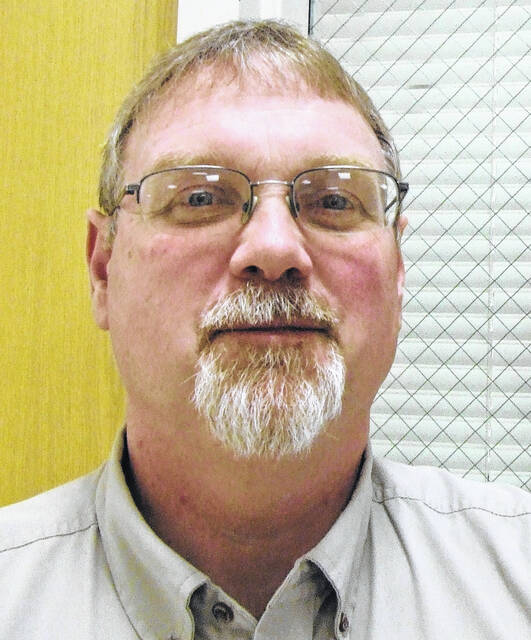
This week I felt obligated to share information with you from Dr. Mark Loux, Weed Specialist at Ohio State University regarding the latest in the herbicide saga producers will be faced with in the coming months.
Before I share Dr. Loux’s information I wanted to highlight one more time a program that I feel is very important for producers to attend — Weed University.
Are you concerned about the effectiveness of your herbicide program? Want to sharpen your weed id skills? Not sure which nozzles provide the best control options? Is herbicide resistance really that big of a problem?
These topics and many more will be discussed at the 2022 Ohio Weed University.
Are you concerned about palmer amaranth and other invasive weeds? One female palmer amaranth plant can produce 1 million seeds. I have it … now how do I control it? How did I get it, and how is it spread?
This high-impact program is designed for producers wanting to be on the “cutting edge” of crop production for their operations.
Topics Include: Local Weed Populations and Late Season Weed Issues; Hot Topics in Weed Control; Weed Biology and Control Strategies; Cover Crop Management in Forages; and Evaluating Your Herbicide Program.
Hands-on activities include weed identification utilizing live plants at various growth stages; nozzle selection and calibration utilizing a spray table; and tank mixing order for different products.
Ohio State University speakers include Dr. Mark Loux, Alyssa Essman and various Extension Educators will be featured to speak at the Fayette County Extension Office 9 a.m.-4 p.m. Wednesday, February 2. Cost of the program is $40 and you can make reservations by calling the Clinton County Extension Office at (937) 382-0901 or the Fayette County Extension office at (740)-335-1150.
The following is provided by Dr Mark Loux:
Sometimes you’d like the crap to stop hitting the fan just long enough to get cleaned up, but you can’t get a break. Like when you’re in the middle of an endless pandemic, a worldwide shipping fiasco, herbicide scarcities and price increases, and parts shortages.
And just when you had it worked out to use Enlist herbicides on Enlist soybeans for 2022 so you wouldn’t have to deal with dicamba, their use is no longer legal in your county. We’re trying to find something reassuring to say here, but there’s not much.
The USEPA issued a new seven-year registration for Enlist One and Enlist Duo, valid through January 2029. Changes include a revised application cutoff for soybeans, “through R1” that replaces “up to R2” on previous labels, and the addition of a slew of spray nozzles to the approved nozzle list.
The most significant change for Ohio is that due to changes in Endangered Species information, Enlist One and Enlist Duo cannot be used in 12 Ohio counties: Athens, Butler, Fairfield, Guernsey, Hamilton, Hocking, Morgan, Muskingum, Noble, Perry, Vinton, and Washington.
We contacted Corteva to see if this was likely to change anytime soon, and got no assurances of this, although the PR information they have distributed indicates it is possible.
This really couldn’t happen at a worse time for growers in these counties. We lack solid information on herbicide availability and price, and it’s a fluid situation, but it appears that glyphosate and glufosinate can be in short supply, and prices high.
Glyphosate resistance in key weed species makes us dependent on POST soybean herbicide systems based on use of glufosinate (Liberty etc), dicamba (XtendiMax/Engenia), or 2,4-D (Enlist One/Duo).
The Enlist system allows use of glyphosate, glufosinate, and 2,4-D, and combinations of these. While Enlist soybeans are tolerant of other 2,4-D products, Enlist One and Duo are the approved 2,4-D products for all POST applications to Enlist soybeans, and any preplant or preemergence applications that occur less than 7 days before planting or anytime after planting.
As far as we know, this prohibition of use does not apply to legal uses of other 2,4-D products. Some things to consider here:
• Some growers/applicators were planning on omitting glyphosate from burndown and/or POST applications. In the Enlist system, this increases the overall importance of the 2,4-D in these applications. Where the Enlist products cannot be used, revaluation of the mixture is warranted. It may be necessary to use glyphosate, or an alternative 2,4-D product in the burndown (with a 7-day wait to plant), or other herbicides, such as Sharpen or Gramoxone.
• The most obvious replacement for Enlist products in POST applications is glufosinate since glyphosate won’t control most populations of ragweed, waterhemp, or marestail. Growers going this route should check on availability and price immediately, since supply seems to be finite.
Due to space, there is more to this article that is specific to the 12 counties most impacted, and you can read the rest by going to the Ohio State University Extension Agronomy team C.O.R.N. newsletter at www. https://agcrops.osu.edu .
Tony Nye is the state coordinator for the Ohio State University Extension Small Farm Program and has been an OSU Extension Educator for agriculture and natural resources for over 30 years, currently serving Clinton County and the Miami Valley EERA.


